Essential Tarantula Care for Beginners
Raising a pet tarantula can be a rewarding experience, offering a fascinating glimpse into the world of arachnids. However, these creatures have specific needs that must be met to ensure their health and well-being. This comprehensive guide provides seven essential tips for beginners, covering everything from choosing the right species to understanding their unique behaviors. By following these guidelines, you can create a thriving environment for your tarantula and enjoy the unique experience of owning one of these incredible animals. Proper care is crucial, and understanding the fundamentals will set you up for success. Remember to always research thoroughly and be patient, as tarantulas are sensitive to their environment and require a calm, consistent approach to their care.
Choosing the Right Tarantula Species
Not all tarantula species are created equal when it comes to ease of care, especially for beginners. Some species are known for their docile temperaments and relatively simple care requirements. When starting out, it’s best to avoid highly defensive or venomous species. Consider the size and expected lifespan of the tarantula, as this will influence the size of the enclosure and the long-term commitment required. Some excellent beginner species include the Chilean Rose Hair tarantula and the Curly Hair tarantula, known for their gentle nature and tolerance of varying conditions. Research the specific needs of each species before acquiring one, paying close attention to their preferred temperature, humidity, and dietary requirements.
Factors to Consider
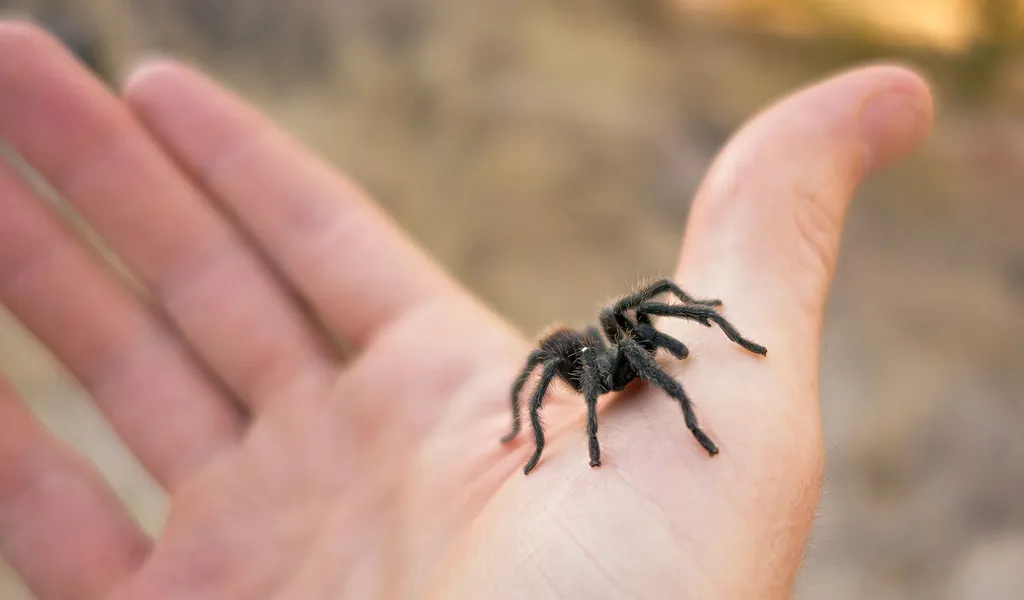
Before selecting a species, consider your personal lifestyle and available resources. Are you prepared to provide live food regularly? Do you have a secure space to house the tarantula, away from children and other pets? Are you comfortable with the occasional handling of a tarantula, or would you prefer a more hands-off approach? Researching the species’ origin and natural habitat can help you understand the ideal environment for your pet. Also, determine the tarantula’s potential size, as this will directly impact the necessary enclosure dimensions. Consider the availability of the species in your area and whether you have access to a reputable breeder or pet store. Lastly, be prepared for the long haul; tarantulas can live for many years, requiring a long-term commitment.
Setting Up Your Tarantula’s Enclosure
The enclosure is the tarantula’s home, and creating the right environment is essential for its well-being. The size, substrate, and environmental controls must be carefully considered. A well-designed enclosure provides a safe and comfortable space for the tarantula to thrive. Proper setup replicates the natural habitat as closely as possible, minimizing stress and promoting healthy behaviors. Ensure that the enclosure is escape-proof, as tarantulas are masters of escape. The material should be durable and easy to clean, such as glass or acrylic. Ventilation is also essential to prevent mold and maintain appropriate humidity levels. Regular maintenance is needed to sustain a healthy enclosure, which will further contribute to the tarantula’s health.
Enclosure Size and Type
The enclosure size should be appropriate for the tarantula’s size, allowing ample space to move around and establish a comfortable territory. A general rule is to provide an enclosure that is at least twice the tarantula’s leg span in width and length, and at least twice the leg span in height. Terrestrial species, which live on the ground, require more floor space, while arboreal species, which live in trees, benefit from more height. The enclosure type can vary depending on the species and your personal preference. Glass terrariums and plastic enclosures are popular choices, but the most important factor is the ability to maintain the necessary environmental conditions. The enclosure should have a secure lid to prevent escapes and sufficient ventilation to ensure good air circulation.
Substrate Selection
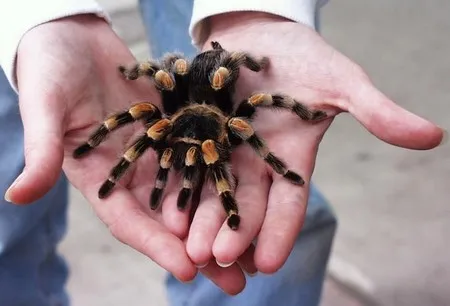
The substrate is the material that covers the bottom of the enclosure, providing a natural environment for the tarantula and absorbing waste. The choice of substrate depends on the species and their preferred habitat. For most terrestrial species, a mixture of peat moss, coconut fiber, and a small amount of vermiculite is ideal. These substrates retain moisture well, helping to maintain the required humidity levels. Arboreal species may benefit from a substrate that is slightly drier, with more ventilation. Avoid substrates that are toxic or that could trap the tarantula’s legs. The substrate should be deep enough to allow the tarantula to burrow if it chooses, and it should be replaced regularly to prevent the buildup of bacteria and mold. Also, you can add decorative elements like cork bark or artificial plants for enrichment.
Temperature and Humidity Control
Tarantulas are ectothermic, meaning they rely on external sources to regulate their body temperature. Maintaining the correct temperature and humidity levels is critical for their health and well-being. Most tarantulas thrive in temperatures between 70-80°F (21-27°C). Using a heat mat or ceramic heat emitter can help maintain these temperatures, but avoid direct heat sources. The humidity level should be monitored using a hygrometer. For many species, a humidity level of 60-70% is ideal, although this can vary depending on the species. Provide a water dish and mist the enclosure regularly to maintain the correct humidity. Avoid excessive humidity, as this can lead to mold and fungal infections. Ensure proper ventilation to regulate temperature and humidity effectively.
Feeding Your Tarantula
Feeding is a crucial part of tarantula care, providing the energy and nutrients they need to grow and thrive. The type and frequency of feeding will vary depending on the species, size, and age of the tarantula. Understanding the dietary needs of your tarantula is fundamental to its health and longevity. Always ensure the food source is healthy and free from pesticides or other harmful substances. Offering a balanced diet is important for overall well-being. Observing the tarantula’s eating habits and adjusting the feeding schedule accordingly is crucial for their care.
Choosing the Right Food
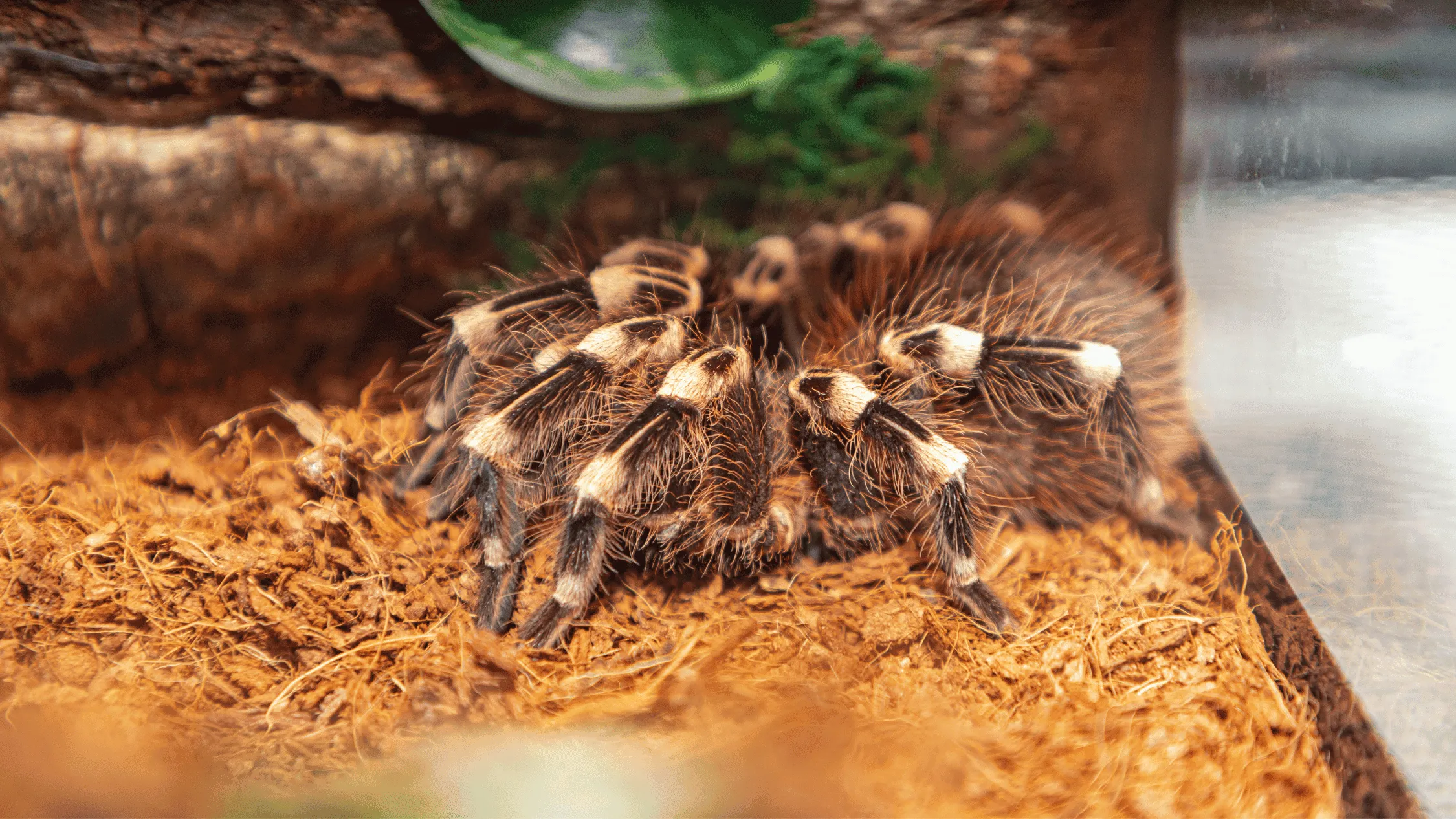
Tarantulas are primarily insectivores, and their diet should consist of live insects. Crickets, mealworms, and roaches are common and easily accessible food sources. The size of the prey should be appropriate for the tarantula’s size, generally no larger than the tarantula’s body length. Avoid feeding tarantulas insects that are too large, as this can stress the tarantula or even pose a danger. It’s important to gut-load the insects before feeding them to the tarantula, providing them with nutritious food like vegetables and fruits. This ensures that the tarantula receives essential vitamins and minerals. Remove any uneaten prey after 24 hours to prevent stress and potential harm to the tarantula.
Feeding Frequency
The frequency of feeding depends on the tarantula’s age, size, and metabolism. Young tarantulas, or spiderlings, typically need to be fed more frequently, about two to three times a week. Adult tarantulas can be fed once or twice a week. Overfeeding should be avoided, as this can lead to health problems. Observe the tarantula’s abdomen; if it appears plump and round, the tarantula is likely well-fed. If the tarantula refuses to eat, it could be a sign that it’s about to molt or that it is not feeling well. Always provide fresh water, even when the tarantula is not eating. Adjust the feeding schedule as needed, based on the tarantula’s individual needs and behavior.
Watering Your Tarantula
Providing fresh water is essential for a tarantula’s hydration and overall health. Tarantulas require access to clean water at all times. There are several ways to ensure your tarantula has a constant water source. Always monitor the water source for cleanliness, replacing water as needed to avoid contamination. Adequate hydration is critical for molting and overall health. A dry tarantula can experience health issues. Water needs are especially critical during the molting process. Ensure fresh water is always available.
Providing Fresh Water
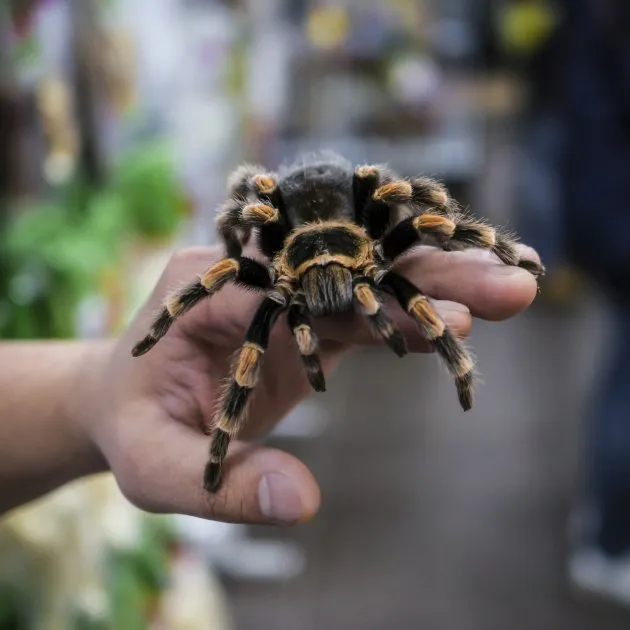
The most common way to provide water is through a shallow water dish, which should be easily accessible to the tarantula. The water dish should be small enough to prevent the tarantula from drowning, especially for smaller spiderlings. Use a sponge or small pebbles in the water dish to give young tarantulas a better grip and prevent accidental submersion. Clean and refill the water dish regularly, ideally daily, to keep the water fresh. The size of the water dish should be appropriate for the size of the tarantula. If the tarantula frequently overturns the water dish, consider using a heavier dish that is less likely to tip over.
Misting the Enclosure
In addition to a water dish, misting the enclosure can help maintain the correct humidity levels, especially for species that prefer higher humidity. Use a spray bottle filled with clean, dechlorinated water to lightly mist the enclosure. The frequency of misting will depend on the species and the humidity levels in your home. Generally, misting once or twice a week is sufficient for most species. Avoid over-misting, as this can lead to excessive humidity and the growth of mold. Monitor the humidity levels using a hygrometer and adjust the misting frequency accordingly. The misting can also provide additional hydration, especially during molting.
Handling Your Tarantula
Handling a tarantula should be approached with caution and respect for the animal’s well-being. While some tarantulas are relatively docile, others can be defensive and may bite or flick urticating hairs, causing irritation. Handling should be kept to a minimum, and never forced. Always assess the tarantula’s behavior before attempting to handle it, and be prepared to react calmly and safely if the tarantula shows signs of distress. Handling is not a necessary part of tarantula care and can even be detrimental to the tarantula’s well-being. Handling should be done only when necessary. If you choose to handle your tarantula, approach it with care and patience, and always prioritize its safety.
Safe Handling Practices
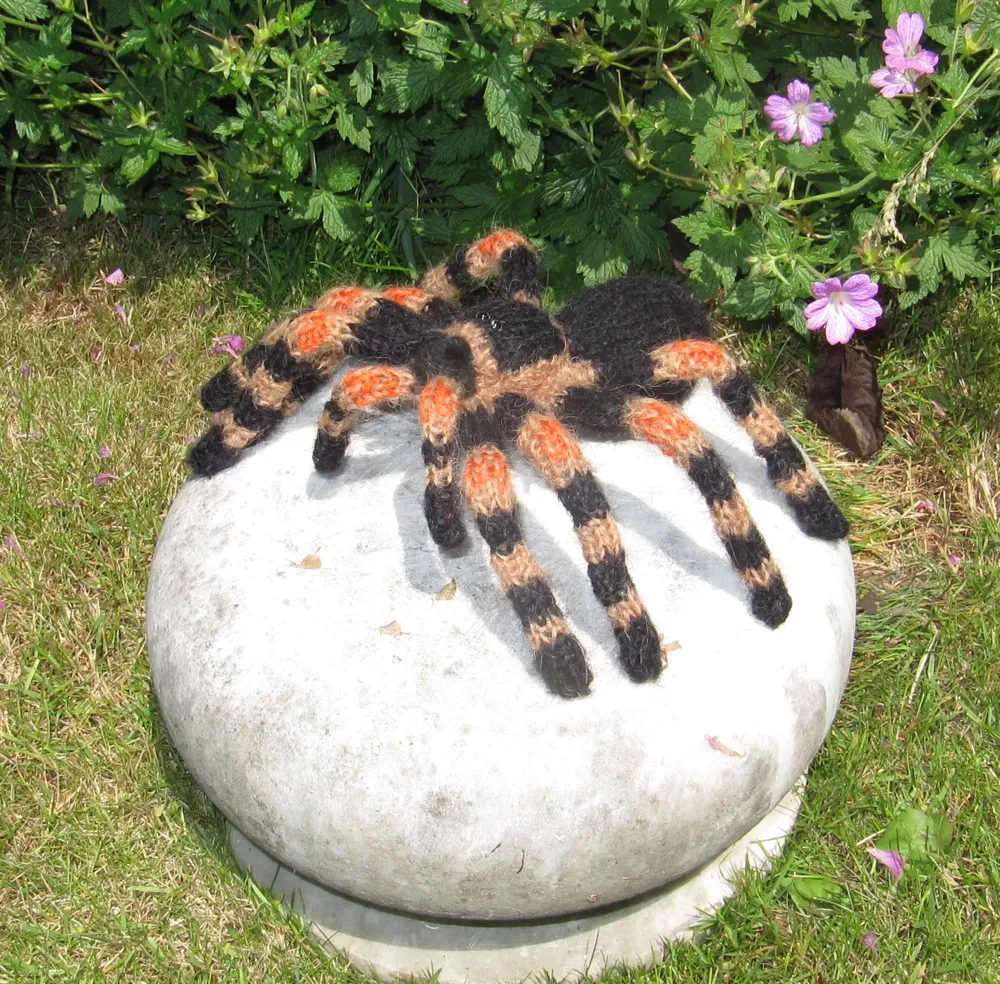
If you decide to handle your tarantula, it’s essential to do so safely. Wash your hands thoroughly before and after handling to remove any scents or substances that could potentially harm the tarantula. Handle the tarantula over a soft surface, such as a bed or couch, to minimize the risk of injury if it falls. Use a gentle approach, and avoid sudden movements. Allow the tarantula to walk onto your hand willingly, rather than trying to grab or force it. Be aware of the tarantula’s behavior, and be ready to put it back in its enclosure if it shows signs of stress or defensiveness. Always supervise children when handling tarantulas. Do not handle the tarantula if you have any cuts or abrasions on your hands, as these can be vulnerable to the tarantula’s venom.
When to Avoid Handling
There are several situations where handling a tarantula should be avoided. Never handle a tarantula that is about to molt, as this can be extremely stressful and potentially fatal. Avoid handling a tarantula after it has eaten, as it may be more defensive. Do not handle a tarantula that is showing signs of stress, such as defensive postures or erratic movements. If you are bitten by a tarantula, remain calm. The bite itself is rarely dangerous, but it can be painful. Clean the bite area with soap and water and seek medical attention if you experience any severe symptoms. It’s also wise to avoid handling a tarantula that is exhibiting other symptoms, such as loss of appetite or lethargy.
Maintaining a Clean Enclosure
Maintaining a clean enclosure is critical for the tarantula’s health and preventing disease. Regular cleaning helps remove waste products, uneaten food, and other debris that can create an unhealthy environment. A well-maintained enclosure also reduces the risk of mites and other pests. Regular cleaning is a core element of responsible tarantula ownership. Create a cleaning schedule to keep the enclosure clean and healthy. A clean environment directly benefits the tarantula’s well-being.
Regular Cleaning Schedule
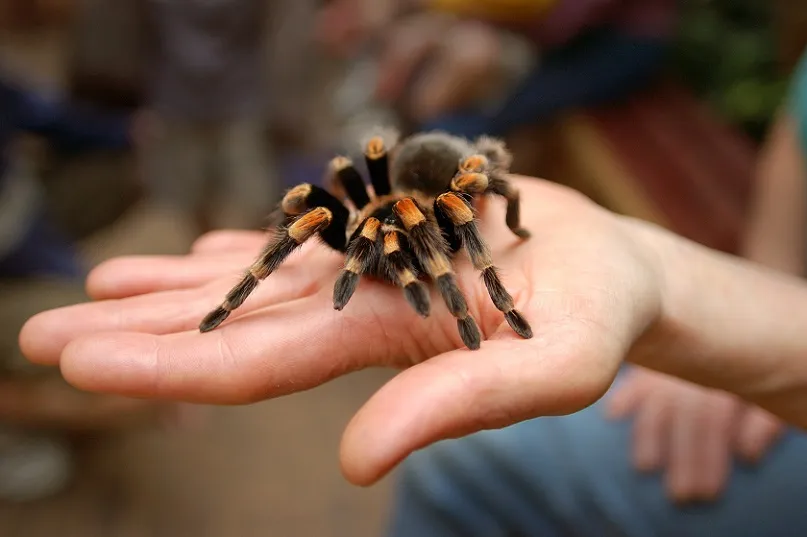
Establish a regular cleaning schedule to maintain a healthy environment. Spot clean the enclosure weekly, removing any visible waste, uneaten food, and molted skin. The frequency of the spot cleaning will depend on the size of the enclosure and the amount of waste produced. Replace the substrate every few months, or as needed, depending on the type of substrate and the species of tarantula. When replacing the substrate, completely remove the old substrate and clean the enclosure thoroughly with a mild disinfectant. Make sure to rinse the enclosure thoroughly with clean water and allow it to dry completely before adding new substrate. Ensure there is no trace of cleaning product.
Spot Cleaning
Spot cleaning is the process of removing visible waste and debris from the enclosure. Use a pair of tongs or tweezers to carefully remove any fecal matter or uneaten food. Gently remove any molted skin, which can be a source of mites if left in the enclosure. Be careful not to disturb the tarantula while spot cleaning. If the tarantula is hiding or showing signs of stress, wait until later to clean the enclosure. Observe the enclosure regularly for signs of contamination. Clean the water dish and replace the water frequently. Spot cleaning helps prevent the buildup of bacteria, mites and also keeps the enclosure looking aesthetically pleasing.
Recognizing and Addressing Health Issues
Like all pets, tarantulas can experience health problems. Recognizing the signs of illness early and taking appropriate action is crucial. Learn to identify common health issues and when to seek professional help. By understanding potential problems and their solutions, you can ensure the tarantula’s well-being and also promote a long and healthy life. A well-informed owner is best equipped to care for their pet. Early intervention can often resolve issues before they become severe. Recognizing symptoms will help you address concerns promptly. Regularly observe the tarantula.
Identifying Common Problems
Several signs can indicate a health problem in a tarantula. Loss of appetite, lethargy, and unusual behaviors, such as excessive hiding, can be red flags. Check for any signs of injury, such as wounds or swelling. Examine the tarantula for mites, which can be visible as small, moving dots. Look for any discoloration or abnormalities in the tarantula’s abdomen or legs. Difficulty molting can also be a sign of underlying health issues. Understanding these signs is the first step toward identifying a potential problem. Keep a record of the tarantula’s behavior and appearance to help you notice changes over time. A quick response can resolve potential issues.
Seeking Veterinary Advice
If you suspect that your tarantula is sick, it’s essential to consult a veterinarian experienced with exotic animals. Not all veterinarians have experience with tarantulas, so research and find a qualified professional in your area. Describe the symptoms and any changes you’ve observed in the tarantula’s behavior. The veterinarian may perform a physical examination and recommend diagnostic tests. Follow the veterinarian’s advice and administer any medications or treatments as directed. Be prepared to provide information about the tarantula’s environment, diet, and care routine. Regular checkups can help ensure the health of the tarantula.
Understanding Tarantula Molting
Molting is a natural and essential process for tarantulas, where they shed their exoskeleton to grow. The molting process can be a stressful time for a tarantula, and proper care is crucial during this period. Understanding the molting cycle and providing the appropriate environment will contribute to the tarantula’s well-being. Molting is a crucial part of a tarantula’s life cycle. Knowing the process helps ensure a safe and successful molt. Proper care during molting is essential. Preparation and support are key for a successful molt.
What to Expect During Molting
Before molting, a tarantula may stop eating and become less active. It may also create a web mat in the enclosure or lie on its back. The molting process itself can take several hours or even days, depending on the tarantula’s size and age. During the molt, the tarantula will shed its entire exoskeleton, including the lining of its book lungs and digestive tract. After molting, the tarantula’s new exoskeleton will be soft and vulnerable. The tarantula will typically remain in a vulnerable state for several days while its new exoskeleton hardens. Do not disturb the tarantula during this period. Observe the tarantula, but do not interfere.
Providing a Safe Molting Environment
During the molting process, it’s essential to provide a safe and undisturbed environment. Maintain the correct temperature and humidity levels. Ensure that the enclosure is free from any potential hazards, such as sharp objects or items that could injure the tarantula. Do not attempt to assist the tarantula with molting, as this can be dangerous and potentially fatal. Avoid handling the tarantula before, during, or after molting. Provide a shallow dish of water to help the tarantula stay hydrated. After molting, wait a few days before offering food, as the tarantula’s fangs will not have hardened yet. A safe, stress-free environment is critical for a successful molt. Provide extra support and protection during molting.
Enjoying Your Tarantula
Raising a tarantula can be a truly unique and rewarding experience. By providing proper care and understanding their needs, you can enjoy watching these fascinating creatures thrive. Take the time to learn about your tarantula’s specific species and behaviors. Observe your tarantula regularly, and appreciate its unique beauty and characteristics. Owning a tarantula is not just about providing food and water; it is also about understanding and appreciating its fascinating life. Enjoy the journey and the unique experience of raising a pet tarantula. With proper care, you can have a healthy and also enjoyable experience with your pet tarantula.
